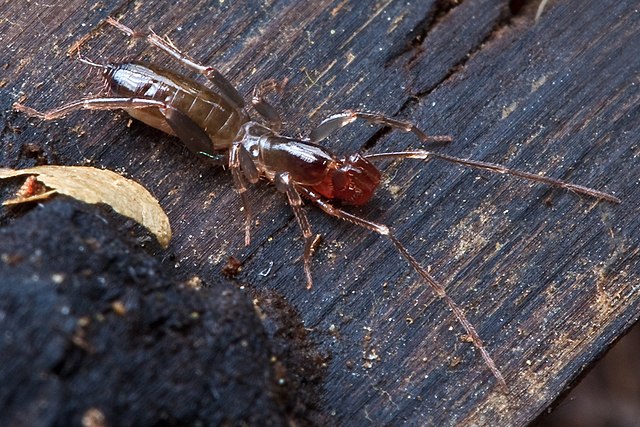Cleon
Legend
Heh..beat me to it...I was musing on this meself..
By "rough draft" I of course meant "practically finished if I didn't find something to fuss over"…
Heh..beat me to it...I was musing on this meself..
Also then for completeness, do we make giant schizomid as well. They are interesting in that they only have vestigial vision, hence could have Resistance or Immunity to illusions I guess....
Multiattack. The amblypygid makes two foreleg attacks against the same target. If it hits, it can make a bite attack against the target, with Advantage if it hits with both forelegs, without Advantage if it hits with one foreleg.
Foreleg. Melee Weapon Attack: +3 to hit, reach 5 ft., one target. Hit: 3 (1d4 + 1) piercing damage, and the target is grappled (escape DC 11). The amblypygid can grapple only one target at a time.

So presumably giant schizomida will be 1d8+1 HD?
Did ponder then whether amblypygi should be 3HD instead to space them all out, but alternatively having some more low level critters might be a good thing. I am pretty busy next 24-36 hours so go for thy life!
a defensive spray may be discharged (up to 80 cm)
agree with idea of buffing amblypygid a little to plant it more midway between schizomid and uropygid.
Amblypygid, Giant
Medium beast, unaligned
Armor Class 14 (natural armor)
Hit Points 11 (2d8 + 2)
Speed 30 ft., climb 30 ft.
Skills Acrobatics +7, Perception +3
Senses blindsight 60 ft., passive Perception 13
Languages —
Challenge 1/4 (50 XP) Proficiency Bonus +2
Spider Climb. The giant amblypygid can climb difficult surfaces, including upside down on ceilings, without needing to make an ability check.
Flattened Body. A giant amblypygid can move or squeeze through narrow spaces as if it were a Small creature. It also has Advantage on skill or ability checks to squeeze through tight spots.
Actions
Multiattack. The amblypygid makes two foreleg attacks against the same target. If it hits, it can make a bite attack against the target, with Advantage if it hits with both forelegs, without Advantage if it hits with one foreleg.
Foreleg. Melee Weapon Attack: +3 to hit, reach 5 ft., one target. Hit: 3 (1d4 + 1) piercing damage, and the target is grappled (escape DC 11). The amblypygid can grapple only one target at a time.
Bite. Melee Weapon Attack: +3 to hit (with Advantage if target already grappled), reach 5 ft., one target. Hit 4 (1d6 + 1) piercing damage.
I modelled the uropygid on its 1e counterpart and am happy to leave as is
I like idea of incorporating mastigoproctus into the name of a ginormous one as thelyphonid seems a bit odd given we've subdivided the three others.
